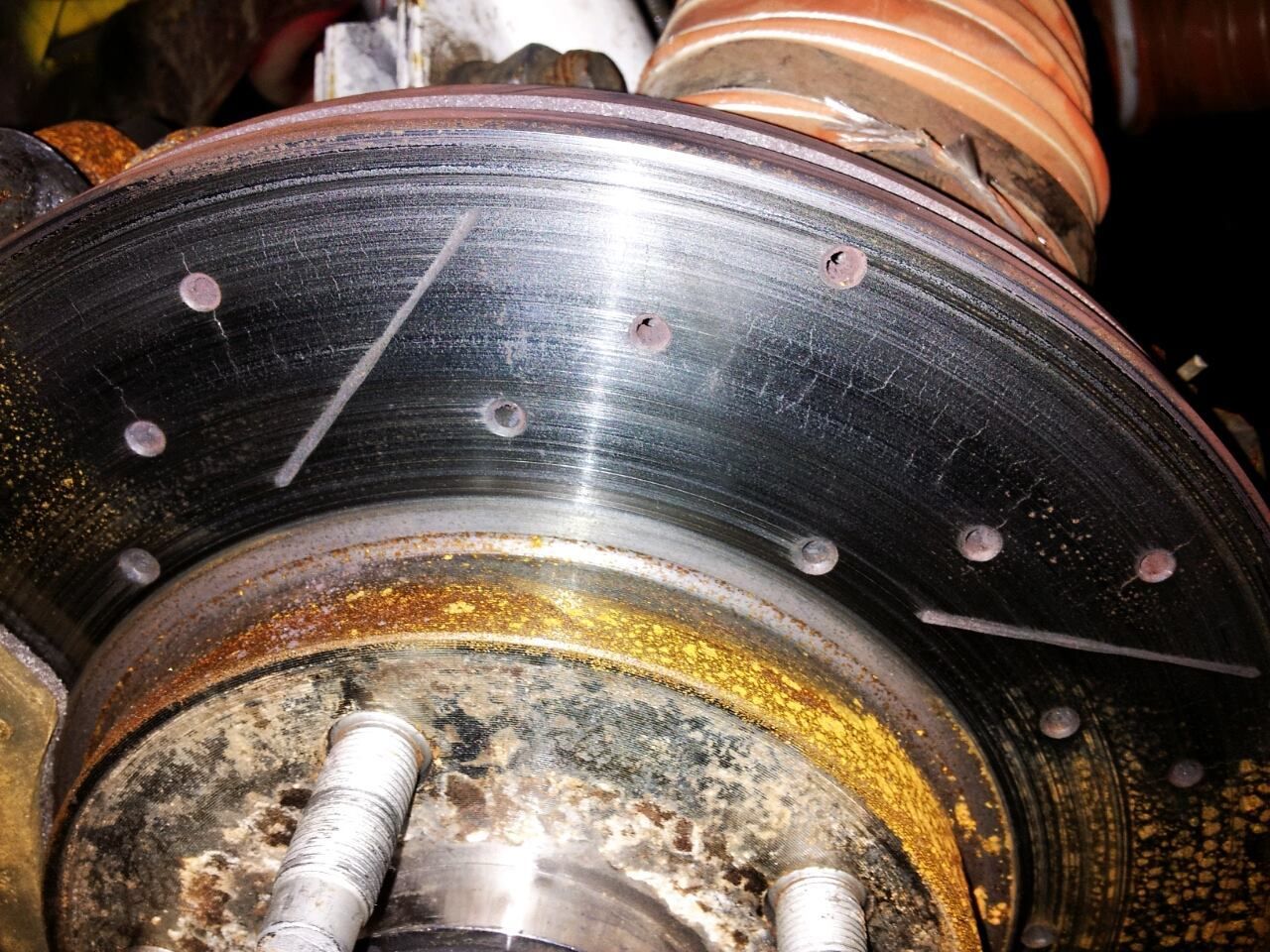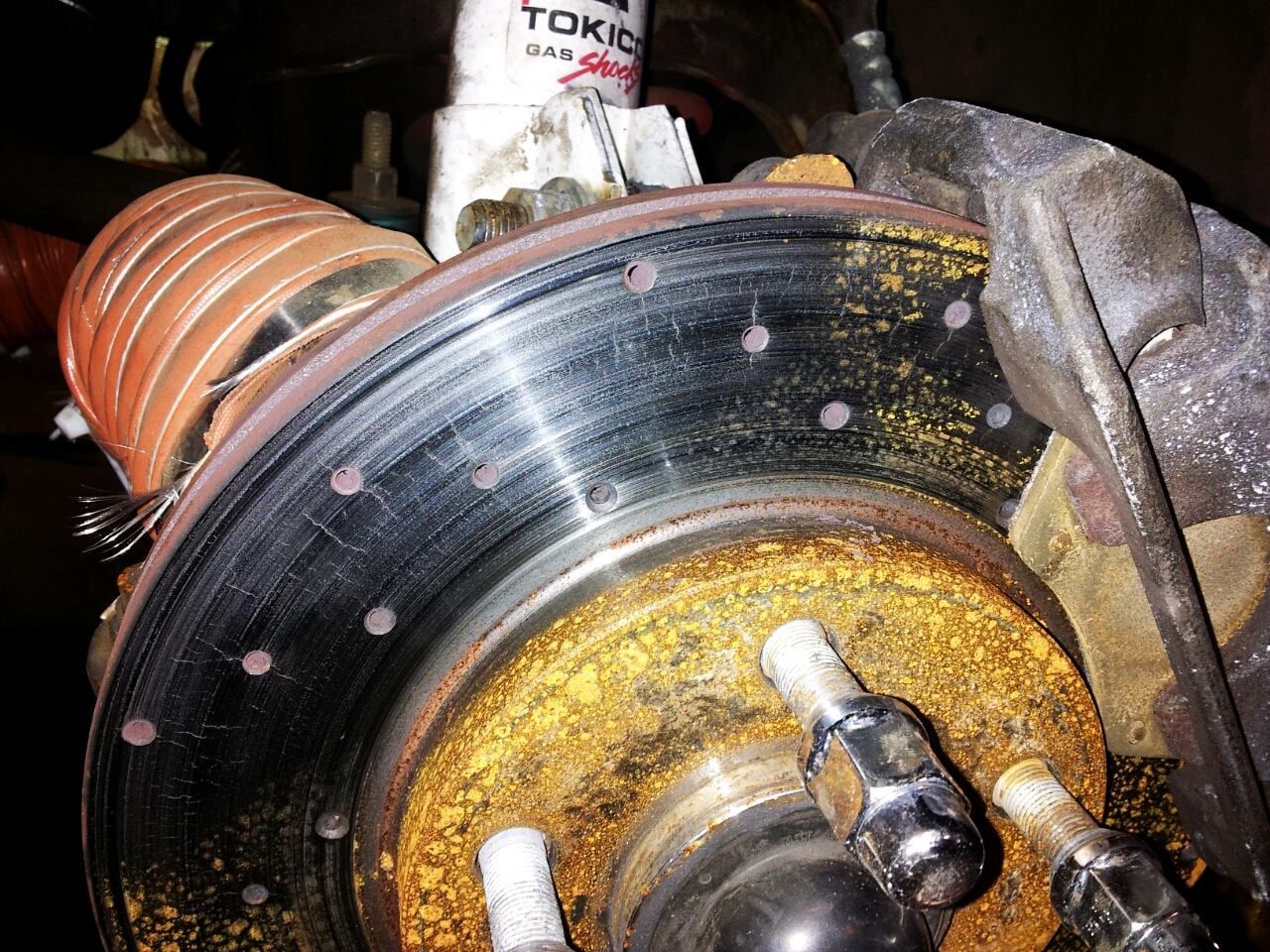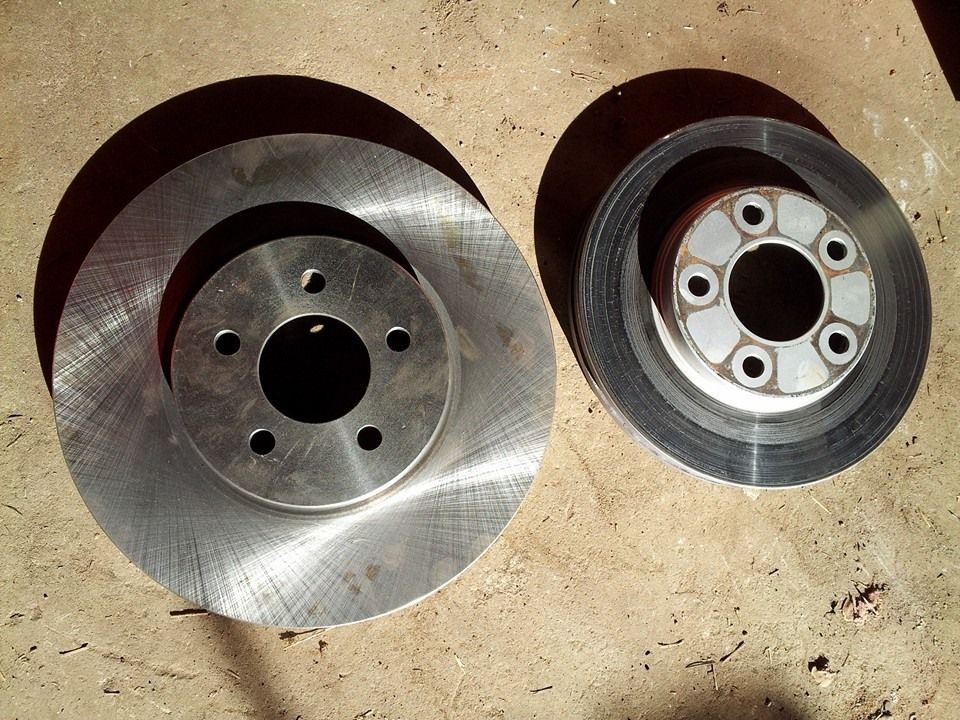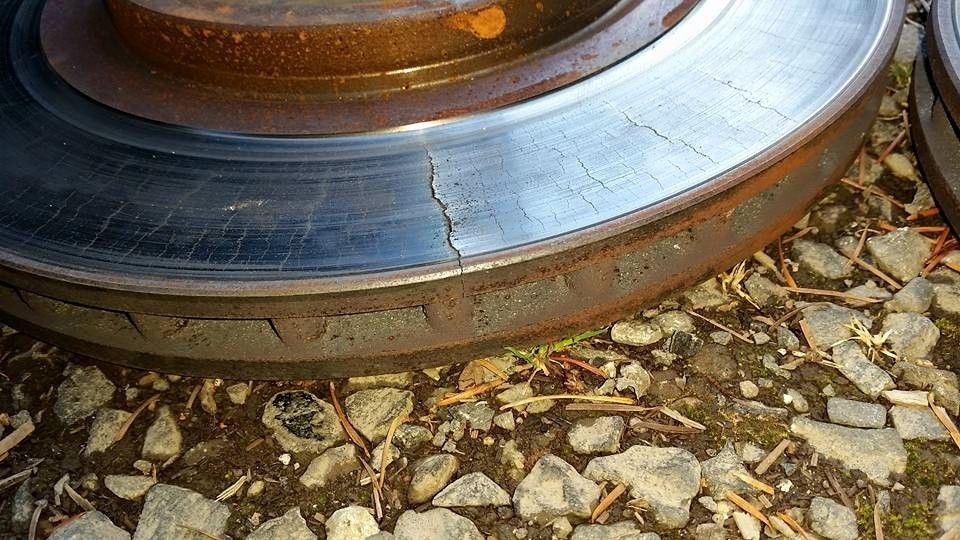Yeah, Tim's Valiant is kind of the high end of Mopar street drivers. It was a super fun car and then it turned into a real monster once we dropped the 427 stroker motor in there. He needed all the brakes that we could hang on there! That car would go 160 mph if you were brave enough to keep your foot in it. 160 mph in a Valiant is scary.
160mph in a Valiant has to take some seriously large brass ones. Even with the way that car is set up, you have to be working pretty hard against the aerodynamics of the car at that point.
There's also a big difference between holes and slots cast into the rotor or machined into the rotor. The worse of the two is almost always the machined rotors as you're discontinuing the grain structure of the material causing stress risers (slots and holes are already a stress riser by themselves). My bet is that those Mercedes and Porsche rotors have their slots and holes casted in the rotor. For a street car you won't really get much added benefit except for looks.
Yup. If the rotors are cast that way it's quite a bit different than if they've been drilled or machined. Even if they were cast that way and then cleaned up during the machining process it makes a difference. And of course, I've seen some "shade-tree" cross drilling done by folks at home that was so frightening it would give all drilled rotors a bad name.
Holes are evil, rotors crack at the holes. Anything will crack at a hole, but the thermal growth of a rotor puts huge internal stresses in it and the holes are major stress risers.
An engineer designed those rotors, sure, but two things happened after that. Marketing said that the market wants holes in the rotors and made enough of a case for it with accounting that the engineers were over-ruled. BT, DT.
It's all about the manufacturing. I've had the drilled/slotted 11.75" rotors on my Challenger for well over 50k miles now. I've worn through a set of semi-metallic pads in that time, and the rotors still look great. No cracking, no warping. Granted, that's on a car that's street driven, and while I have been known to get a little spirited when I take the car out to the twisty's up in the mountains, I haven't competed with it on the track. So the heat cycling I've subjected mine to isn't exactly the worst case scenario. But that's also just with regular old Summit rotors straight off the boat from China. So, not exactly the pinnacle of manufacturing or design. But the holes were cast in.
As far as your example of the engineer being over-ruled, it suggests that no engineer would ever endorse drilled or slotted rotors. Since they're frequently used on race cars that are never marketed to the public and whose sole purpose is performance, your logic is flawed. As I already said, it's all about the manufacturing. And while I know that the major auto-manufacturers are no saints, the process for getting a car through testing and out on the market would prohibit a production car getting a redesign like drilled rotors without at least the sign-off from a high ranking engineer. Maybe it wouldn't trigger a complete redesign, but you'd better believe an engineer signed off on it.
Simply saying "all holes are bad" is a pretty simplistic statement. Sure, thermal cycling can cause issues, and stress risers can be a problem (although that's more relevant to drilled holes than cast ones). But there's a lot more to it than that, and there are ways to deal with/minimize those stresses (like putting a countersink relief on the holes as revhondo suggested). Everything is a trade off when it comes to engineering design. And of course you're right about marketing/accounting and production. A lot of really great designs have been turned into disastrous products by bean counters. But that also doesn't mean that every drilled/slotted rotor on the market is a time bomb waiting to go off. The drilled/slotted rotors on my Challenger are going to run out of spec on their thickness tolerance without ever having cracked or warped, and they're far from the high end of rotor design.




















